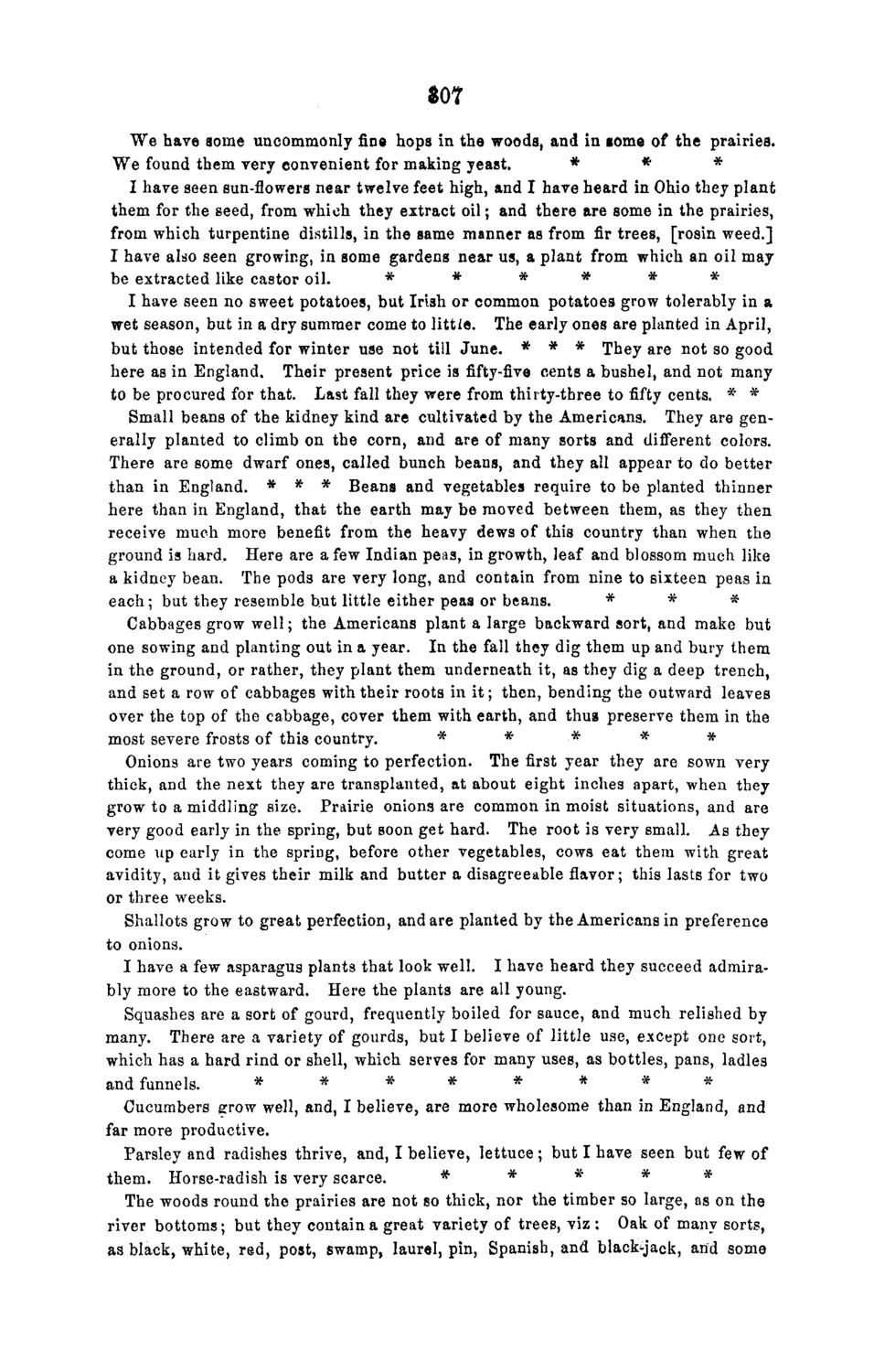| |
| |
Caption: Board of Trustees Minutes - 1868
This is a reduced-resolution page image for fast online browsing.

EXTRACTED TEXT FROM PAGE:
$07 We have some uncommonly fine hops in the woods, and in tome of the prairies. We found them very convenient for making yeast. * * * I have seen sun-flowers near twelve feet high, and I have heard in Ohio they plant them for the seed, from which they extract oil; and there are some in the prairies, from which turpentine distills, in the same manner as from fir trees, [rosin weed.] I have also seen growing, in some gardens near us, a plant from which an oil may be extracted like castor oil. * * * * * * I have seen no sweet potatoes, but Irish or common potatoes grow tolerably in a wet season, but in a dry summer come to littie. The early ones are planted in April, but those intended for winter use not till June. * * * They are not so good here as in England. Their present price is fifty-five cents a bushel, and not many to be procured for that. Last fall they were from thirty-three to fifty cents. * * Small beans of the kidney kind are cultivated by the Americans. They are generally planted to climb on the corn, and are of many sorts and different colors. There are some dwarf ones, called bunch beans, and they all appear to do better than in England. * * * Beans and vegetables require to be planted thinner here than in England, that the earth may be moved between them, as they then receive much more benefit from the heavy dews of this country than when the ground is hard. Here are a few Indian peas, in growth, leaf and blossom much like a kidney bean. The pods are very long, and contain from nine to sixteen peas in each; but they resemble but little either peas or beans. * * * Cabbages grow well; the Americans plant a large backward sort, and make but one sowing and planting out in a year. In the fall they dig them up and bury them in the ground, or rather, they plant them underneath it, as they dig a deep trench, and set a row of cabbages with their roots in it; then, bending the outward leaves over the top of the cabbage, cover them with earth, and thus preserve them in the most severe frosts of this country. * * * * * Onions are two years coming to perfection. The first year they are sown very thick, and the next they are transplanted, at about eight inches apart, when they grow to a middling size. Prairie onions are common in moist situations, and are very good early in the spring, but soon get hard. The root is very small. As they come up early in the spring, before other vegetables, cows eat them with great avidity, and it gives their milk and butter a disagreeable flavor; this lasts for two or three weeks. Shallots grow to great perfection, and are planted by the Americans in preference to onions. I have a few asparagus plants that look well. I have heard they succeed admirably more to the eastward. Here the plants are all young. Squashes are a sort of gourd, frequently boiled for sauce, and much relished by many. There are a variety of gourds, but I believe of little use, except one sort, which has a hard rind or shell, which serves for many uses, as bottles, pans, ladles and funnels. * * * * * * * * Cucumbers grow well, and, I believe, are more wholesome than in England, and far more productive. Parsley and radishes thrive, and, I believe, lettuce; but I have seen but few of them. Horse-radish is very scarce. * * * * * The woods round the prairies are not so thick, nor the timber so large, as on the river bottoms; but they contain a great variety of trees, viz : Oak of many sorts, as black, white, red, post, swamp, laurel, pin, Spanish, and black-jack, and some
| |